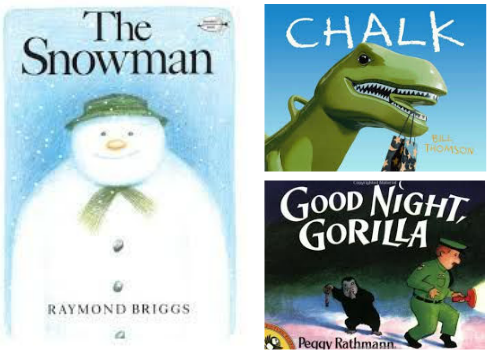
With so much focus on reading for children with dyslexia, the choice of a wordless picture book might seem to be unusual, but it shouldn’t be. Dyslexic children should be exposed to wordless picture books at an early age, and also be encouraged to continue read them even when they are older. In many ways, picture books (or movies) are a more natural way for dyslexics to process stories.
If you didn’t grow up reading wordless picture books, here are some great ideas of how to introduce or read these books with kids.
1. Approach the Book as a Discovery. Look at the cover and pictures as clues and wonder aloud with your child or class. Be open to observations and different interpretations.
2. Don’t Turn the Page Too Fast. Wordless picture books require a different pace.

3. Ask Questions. What do you think is happening? What else do you see and how do you think she feels? Do you ever feel this way? And finally, what do you think will happen next? Good pictures stimulate creative thinking and problem solving, empathy and compassion, and also help children become good storytellers themselves.
4. Turn the Book into a Movie. Bring the book alive by adding dialogue and different voices.
5. At Points of Tension or Conflict, Ask, “What Would You Do?” From Aaron Becker, illustrator of The Journey Trilogy (above): “I think this helps children identify with the characters’ challenges. And it raises the stakes for what might happen on the page turn. Act surprised even if you know what’s coming.
Popular wordless (or almost completely wordless) picture books for young children include books such as Jerry Pinkney’s The Lion and the Mouse, Raymond Briggs, The Snowman, Bill Thomson’s Chalk or Peggy Rathmann’s Good Night Gorilla.


In the last few years, there has been an explosion of high quality visual-rich books for older readers. Great wordless picture books for older readers includes books like David Wiesner’s Flotsam or Aaron Becker’s Journey Trilogy. Other great wordless picture books for older readers include Barbara Lehman’s The Red Book, Mr. Wuffles, and The Arrival. ‘Read alouds’ of the books (individual retellings) can often be found on YouTube and they can give you some examples of how to tell the stories with your own words.















What book is the first picture from? The one under point number 2? Looks intriguing. Would like to get for my daughter.
Thank you,
Tove
Hi Tove, The first picture is from Aaron Becker’s Journey. Isn’t it incredible?